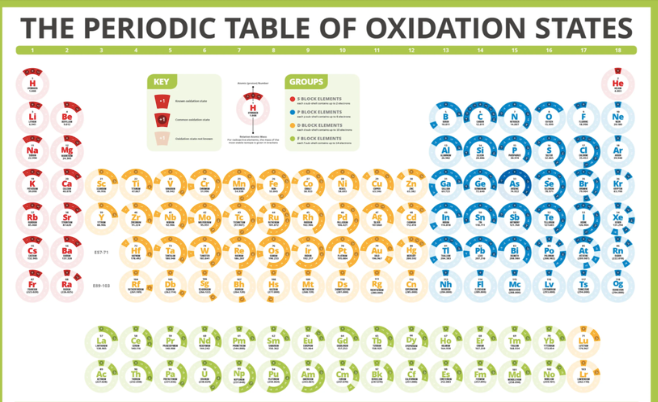Oxidation and Reduction - Definition, Examples, Reactions, FAQs
What is an Oxidation reaction?
In class 12th CBSE Chemistry, we come across the Terms oxidation and reduction quite often. Also, loss of electron is called oxidation. Specifically, oxidation meaning is the process of gaining oxygen in chemical reactions. In this lesson, we will take a closer look at a reduction chemistry through two different lenses.
Oxidation and reduction are oxygen transfer processes
Oxidation and reduction are electron transfer processes
What is reduction definition?
The oxygen transfer occurrences in Chemistry are referred to as oxygen loss. Oxygen is removed from another substance by reducing agents. Similarly, in the case of hydrogen transfer, the gain is hydrogen. In other words, the agent's work to remove oxygen from one substance and add hydrogen to another is reduced.
Also read -
- NCERT Solutions for Class 11 Chemistry
- NCERT Solutions for Class 12 Chemistry
- NCERT Solutions for All Subjects
Change in oxidation state
Modern molecular structure theory allows for comprehensive definitions of oxidation and reduction. Atoms donate, acquire, or share electrons to form chemical bonds. This makes it possible to assign each atom an oxidation number, which indicates how many of its electrons are involved in bonding with other atoms. Using the atoms in a molecule and their bonding capacities, the bonding pattern within a molecule is determined, and each atom is assigned an oxidation number based on its oxidation state.
In redox processes, changes in the oxidation example state occur as the oxidation number increases, an atom is oxidised; as it decreases, it is reduced. A generalized theory of oxidation states describes the processes involving oxygen atoms (gains; losses; reductions), hydrogen atoms (losses; gains; reductions); and electrons (losses; reductions; gains; reductions). In general, the oxidation-state change definition is compatible with the oxygen-atom-transfer and hydrogen-atom-transfer criteria, and it is always compatible with the electron-transfer criteria when it is applicable. An atom's oxidation state is indicated by a Roman numeral after the element's name or symbol. Iron (III), or Fe (III), is iron with an oxidation state of +3. It is also known as Fe3+, the uncombined Fe (III) ion.
Transfer of oxygen during oxidation and reduction
Oxidation and reduction were introduced to chemical terms in the early 1900s.
Oxidation means gaining oxygen, while reduction means losing oxygen.
The Latin term 'reduction' means 'to lead back.
All reactions that return the metal to its free state are referred to as reduction reactions.

The redox concept's history
Combustion was the first redox reaction definition to receive philosophical and scientific attention. A Greek philosopher named Empedocles listed fire as one of the four elements of matter. Earlier, it was stated that combustion releases phlogiston, an elementary constituent of matter. A closed container's limited ability to support combustion was attributed to phlogiston saturation. The phlogiston theory proposed that the oxide of a metal, such as mercury (II) oxide, was chemically simpler than metal itself. The metal which is obtained from oxide only by adding phlogiston.
Related Topics Link, |
The combustion and formation of oxides
Priestley's discovery of oxygen in 1774 explained the weight gain observed with the burning of sulfur and phosphorus and with the calcination of metals (oxidation). He is credited with applying his ideas to respiration and photosynthesis by the end of the century. Oxidations occur when oxygen is consumed, while reductions occur when oxygen is lost.
Electron transfer in oxidation and reduction
The most widely used and most widely applicable definition of oxidation and reduction is this one.
During Oxidation, electrons are lost, and during Reduction, electrons are gained.
Remembering the oil rig mnemonic will help you remember the concept.
Reduction and oxidation reactions are always interconnected. An electron is never created nor destroyed in a chemical reaction, so the elimination of oxygen and the creation of hydrogen are always in pairs. One cannot exist without the other. Since oxidation and reduction cannot occur separately, they are referred to as 'Redox Reactions'. Reactants that oxidize other reactants are referred to as Oxidizing agents, while reactants that reduce other reactants are referred to as Reducing agents. There is a lot of confusion about whether oxidizing agents accept or give away electrons.
You can figure it out by following these steps.
The other reactants are oxidized by the oxidizing agent
This must indicate that the oxidizing agent is being reduced
(OIL RIGS) Oxidation is the loss of electrons
A compound that oxidizes has to gain electrons
Also Read:
The Common Redox or Oxidation and reduction examples:
The following three redox reactions are discussed:
The combustion reaction - The combustion reaction is a type of redox reaction in which molecular oxygen reacts with a compound to form oxygen-containing products.
2C8H18 + 25O2 → 16CO2 (g) + 18H2O
Disproportionation reaction - A redox reaction in which a single reactant is reduced and oxidized. The reaction is also known as an auto-oxidation reaction.
3ClO-→ClO-3+2Cl-
Displacement Reaction - Redox reaction in which two elements switch places within a compound; one of them is a redox reaction. A single displacement reaction is also known as a displacement reaction.
Zn+2HCl→ ZnCl2+H2
The Redox Reaction: How can we balance it?
The oxidation numbers of the elements should be assigned.
Reduce and oxidize half-reactions.
Equalization is achieved by multiplying half-reaction numbers.
The transition between elements or compounds of electrons characterized by oxidation or reduction is called reduction or oxidation. As their amount of oxidation increases, an atom is oxidized and reduced as the number of oxidation decreases. Photosynthesis and breathing are two essential functions of life that involve redox reactions. A redox reaction involves more steps than a normal chemical equation. The most important step is to determine if there is still a redox reaction.
Also check-
- NCERT Exemplar Class 11th Chemistry Solutions
- NCERT Exemplar Class 12th Chemistry Solutions
- NCERT Exemplar Solutions for All Subjects
NCERT Chemistry Notes: